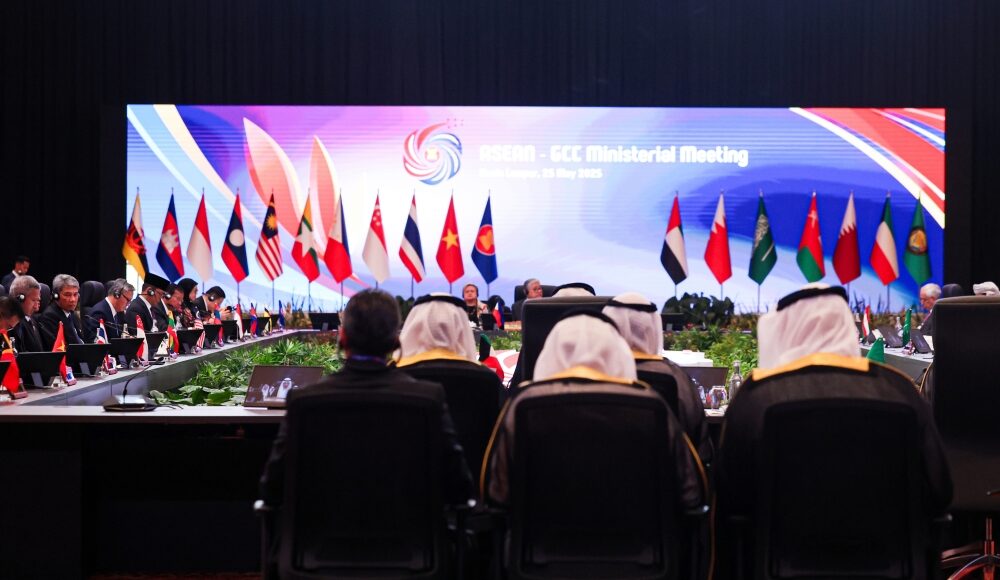MAY 26 — Kuala Lumpur is abuzz, as Malaysia, holding the Asean Chairmanship for 2025 under the theme ‘Inclusivity and Sustainability,’ hosts a pivotal series of high-level meetings between May 26-27 2025.
Beyond the 46th Asean Summit and the 2nd Asean-GCC Summit, the city is witnessing a truly historic event: the inaugural ASEAN-GCC-China Summit.
This isn’t merely a meeting on the horizon; it is happening now, marking a profound resurrection of ancient trade routes and a strategic recalibration of economic geography designed to inject stability and foster growth in a world grappling with fragmentation.
The historical threads linking these regions run deep, tracing back to the Maritime Silk Road that connected the East with the Middle East, facilitating not just the exchange of goods but also ideas and cultures. While that ancient network evolved, the fundamental complementarities remained.
Today, spurred by China’s Belt and Road Initiative (BRI) and the strategic diversification efforts of both Asean and the GCC, this “Ancient Triangulation” is taking on unprecedented significance, hoisted on the principles of ancient and open regionalism of the old.
This inaugural trilateral summit in Kuala Lumpur follows significant precursors: the first China-GCC summit in December 2022 and the inaugural Asean-GCC Summit in October 2023, both held in Riyadh.
These earlier engagements laid the groundwork, and now, the coming together of these three dynamic blocs in Malaysia signifies a concrete intent to integrate these vital economic engines.
The rationale for this trilateral convergence is compelling and multifaceted.
Firstly, there are powerful economic complementarities. China, with its vast consumer market and comprehensive industrial system, serves as a crucial demand driver and manufacturing powerhouse.
Foreign Minister Datuk Seri Mohamad Hasan at the Asean—Gulf Cooperation Council Ministerial Meeting in Kuala Lumpur Convention Centre yesterday. — Bernama pic
Asean, a dynamic production hub and an emerging market of over 680 million people, provides a critical link in global supply chains and a growing consumer base.
The GCC, rich in energy resources, is simultaneously diversifying its economies with significant investments in finance, infrastructure, and green technologies.
This synergy creates a powerful combination: energy resources from the Gulf, manufacturing and supply chain expertise from Southeast Asia, and immense consumption and technological prowess from China.
This is reflected in impressive trade figures, with Asean-China trade nearly hitting $1 trillion in 2024, Asean-GCC trade exceeding $130 billion in 2023, and GCC-China trade around $288 billion in 2024.
Beyond the economic calculus, this Ancient Triangulation also resonates with deep civilizational currents.
The historical interactions between the Islamic world and the Confucian sphere, particularly through Southeast Asia, represent a rich confluence of ideas, trade, and cultural exchange.
This civilizational understanding of shared human values and ethical frameworks, often overlooked in purely economic narratives, underscores that prosperity is often rooted in deeper cultural understanding and mutual respect. A theme emphasized by Professor Emeritus Datuk Osman Bakar and even Prime Minister Datuk Seri Anwar Ibrahim himself.
This confluence of Islamic and Confucian roots is a powerful, underlying current of this ancient form of open regionalism.
Secondly, this alignment offers a strategic buffer against global economic headwinds.
This is all the more pertinent at a time when certain major economies are increasingly leaning towards protectionist measures and unilateral actions, deeper integration among Asean, GCC, and China provides a counterbalance.
As a combined force, representing a substantial portion of the world’s GDP and population, this “South-South” cooperation model can enhance their collective resilience. It aims to create new markets, diversify trade routes, and secure supply chains less vulnerable to external disruptions, thereby injecting certainty into the global economy.
Crucially, this trilateral cooperation also opens the way for a more sustainable energy future for Asean. By fostering deeper collaboration, this summit lays the groundwork for advancing a more robust Asean Power Grid (APG), particularly connections spanning Maritime and Continental Southeast Asia.
This interconnected grid is vital for enhancing energy security, facilitating cross-border renewable energy trade, and driving the region’s energy transition. This push for a greener grid aligns perfectly with broader regional and international initiatives.
Indeed, this momentum is expected to culminate in a thorough path towards the Asia Zero Emissions Community (AZEC), which is backed by Japan, with a key meeting slated for September 2025.
This interconnected vision for energy will not only support economic growth but also ensure it is achieved sustainably.
Thirdly, this trilateral cooperation can foster innovation and sustainable development.
Areas such as clean energy, the digital economy, electric vehicles, and financial services present immense opportunities for joint ventures and knowledge transfer. China’s advancements in renewable energy technologies and digital infrastructure can find receptive partners in Asean’s growing economies and the GCC’s ambition for green transformation.
This convergence offers a pathway to upgrade industrial policies and drive sustainable economic growth across all three regions.
Finally, this initiative implicitly strengthens multilateralism and a decentralized approach to global governance.
By building interconnected regional systems, Asean, GCC, and China demonstrate an alternative model of cooperation that is inclusive and geographically expansive, to which Japan, indeed, Australia, are not altogether unfamiliar with. Witness the visit of Prime Minister of Australia to the jamboree of summits too.
Thus, this “1+1+1>3” synergy not only benefits the participating nations but also champions a more balanced and equitable global economic order.
The convening of this inaugural Asean-GCC-China Summit in Kuala Lumpur is more than just another diplomatic gathering. It underscores a strategic recalibration in the face of evolving geopolitical and geoeconomic realities.
It signals a collective commitment to open trade, diversified partnerships, and shared prosperity, offering a tangible pathway to navigate the complexities of the 21st century and contributing to a more stable and interconnected world.
This week, Kuala Lumpur is not just hosting a summit; it is rekindling an ancient spirit of exchange, rooted in the shared heritage of Islamic and Confucian traditions and hoisted on a revived open regionalism, for the benefit of an open and modern world.
* Phar Kim Beng, PhD, is Professor of Asean Studies at the International Islamic University Malaysia and Visiting Faculty, Asia-Europe Institute, University of Malaya.
** This is the personal opinion of the writer or publication and does not necessarily represent the views of Malay Mail.





